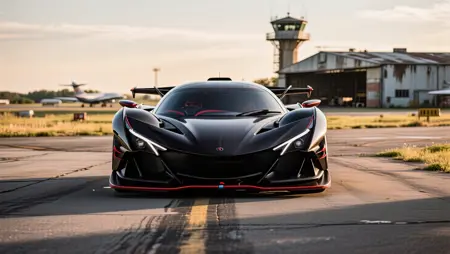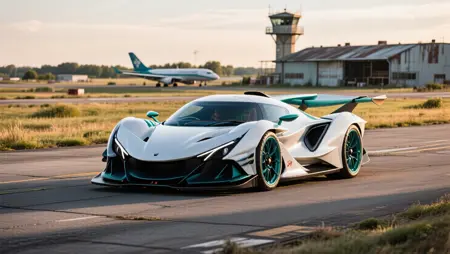Apollo IE - Intensa Emozione - 2017
Details
Download Files
About this version
Model description
Apollo Intensa Emozione: Decoding the Engineering of Raw, Analog Fury
The Apollo Intensa Emozione (IE) emerges as a defiant statement in the hypercar world, prioritizing raw, analog driving emotion over purely digital performance metrics. Born from the rebranding of Gumpert Sportwagenmanufaktur to Apollo Automobil, under Norman Choi's vision, the IE was conceived to rekindle the visceral connection between driver and car, a feeling perceived as lost in many technologically advanced modern supercars. It’s a homage to the GT1 racing era of the 1990s, particularly icons like the Mercedes-Benz CLK-GTR, and consciously eschews turbochargers and hybrid systems for a purer experience.
At its core, the IE is a track-only weapon. Its design, penned by Jowyn Wong, is radical, drawing inspiration from LMP1 racers and nature's apex predators. The exterior is a festival of aerodynamic elements: a massive fixed rear wing, a prominent front splitter with canards, and an expansive rear diffuser. These combine to generate over 1,350 kg of downforce at 299 km/h, theoretically enough to drive inverted. Signature visual cues include a shark-like nose, dramatic fins, gullwing doors, and distinctive trident-style triple exhaust outlets.
Structurally, the IE boasts a bespoke all-carbon-fiber chassis, a "first of its kind" for extending this construction to front and rear subframes and crash structures. This meticulously hand-built monocoque, incorporating a carbon/Kevlar fuel cell, weighs a mere 105 kg, contributing to an overall vehicle curb weight of just 1,250 kg. This chassis exceeds FIA LMP2 safety standards, providing driver protection without needing a traditional roll cage. Development was a collaboration with specialists like HWA AG and Capricorn Group.
The heart of the IE is a 6.3-liter naturally aspirated V12 engine, derived from Ferrari's F140 unit (as used in the F12berlinetta) but thoroughly reworked by Autotecnica Motori and HWA AG. It unleashes approximately 780 horsepower at 8,500 rpm and 760 Nm of torque at 6,000 rpm, screaming towards a 9,000 rpm redline. Power is sent to the rear wheels via a 6-speed Hewland sequential manual transmission with electro-pneumatic paddle shifters. This powertrain enables a 0-100 km/h sprint in 2.7 seconds and a top speed of 335 km/h. Key dimensions include a length of 5,066 mm, width of 1,995 mm, and a height of 1,130 mm, with a 45%/55% front/rear weight distribution.
Dynamics are managed by an F1-inspired double wishbone suspension with a full push-rod and rocker arm architecture at both ends. Bilstein supplies adaptive dampers with selectable modes, and Brembo carbon-ceramic brakes (380mm discs, six-piston front, four-piston rear calipers) provide stopping power. Michelin Sport Cup 2 tires ensure grip, while a 12-level adjustable traction control system allows drivers to tame the beast.
The cockpit is a "cocoon-style" carbon fiber tub, featuring exposed carbon, custom-fitted race seats, and an adjustable steering wheel and pedal box. While analog in feel, it incorporates a digital instrument cluster, an infotainment system, air conditioning, and innovative side mirror cameras displaying rear views on internal screens.
Production was strictly limited to 10 customer units, priced around €2.3 million, each highly customizable. The Apollo IE stands as a testament to unadulterated driving sensation, an ode to the naturally aspirated V12 and extreme aerodynamic grip in an increasingly electrified and digitized automotive landscape.







